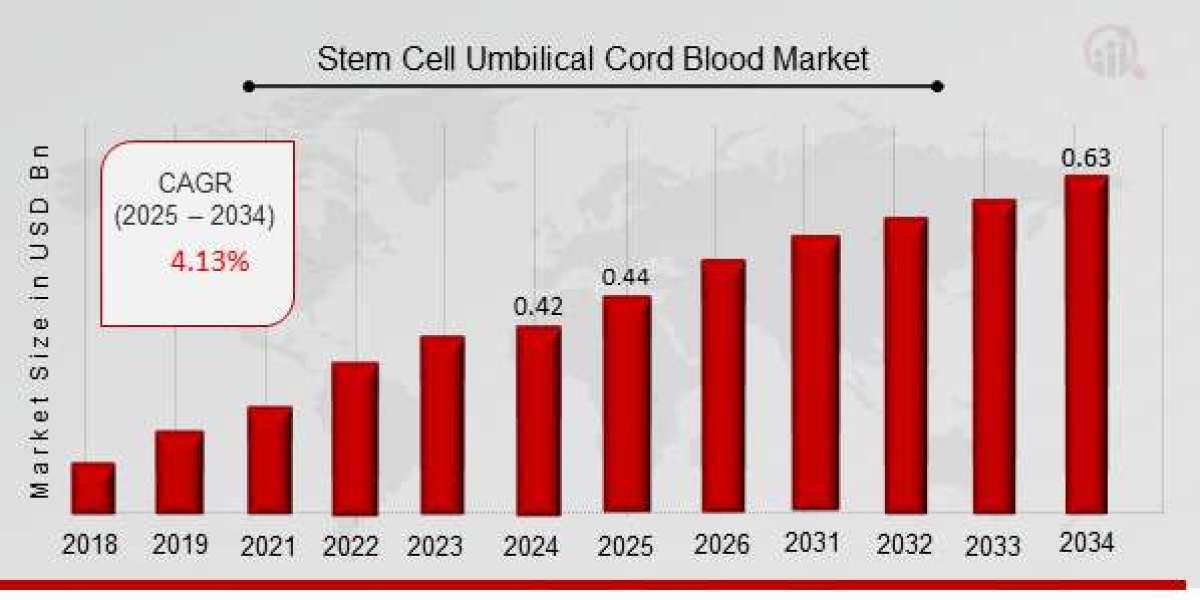The Future of Stem Cell Umbilical Cord Blood Banking in 2025
The field of stem cell research has made significant strides in recent years, with one of the most promising developments being umbilical cord blood banking. Umbilical cord blood, which is collected from the placenta and umbilical cord after childbirth, contains hematopoietic stem cells—cells that can develop into various types of blood cells and are essential in treating several life-threatening diseases, including leukemia, lymphoma, and other blood disorders. As we move into 2025, the stem cell umbilical cord blood market is expected to undergo tremendous growth, with significant technological advancements, increased awareness, and broader applications in regenerative medicine.
What is Umbilical Cord Blood Banking?
Umbilical cord blood banking involves the process of collecting, processing, and storing the stem cells found in umbilical cord blood after a baby’s birth. These stem cells are particularly valuable because they can be used for stem cell therapies to treat a range of medical conditions. The most commonly used stem cells in these therapies are hematopoietic stem cells, which produce all the blood cells the body needs, including red blood cells, white blood cells, and platelets.
There are two main types of umbilical cord blood banks:
Public Cord Blood Banks – These banks collect and store cord blood donations that are made freely available to anyone who needs a stem cell transplant, generally on a first-come, first-serve basis.
Private Cord Blood Banks – These banks store cord blood for individual families, usually for a fee. The stem cells are reserved for use by the baby or a family member in case they need a stem cell transplant in the future.
With increasing awareness of the potential benefits of stem cell therapies, especially those derived from umbilical cord blood, the global umbilical cord blood banking market is poised for significant growth in 2025.
Advancements in Stem Cell Technology: Expanding Applications in 2025
As we approach 2025, stem cell technology has witnessed groundbreaking advancements that will dramatically enhance the utility and effectiveness of umbilical cord blood. These innovations could transform both the scope of applications for cord blood stem cells and the methods of processing and storing them.
Gene Editing Technologies: In recent years, gene-editing technologies like CRISPR-Cas9 have shown the ability to modify stem cells at a genetic level, offering new possibilities for treating genetic disorders. In 2025, we can expect to see the integration of these technologies in cord blood stem cell therapies, allowing scientists to correct genetic defects before transplanting the stem cells into patients. This could lead to the development of highly personalized treatments for genetic diseases like sickle cell anemia, cystic fibrosis, and thalassemia.
Improved Stem Cell Expansion: One of the major challenges in stem cell therapy is the limited number of stem cells that can be derived from a single umbilical cord. However, by 2025, advancements in stem cell expansion techniques will enable the growth of more stem cells from a single collection, making treatments more accessible and reducing the cost of therapy. This could increase the number of stem cell transplantations that can be performed using cord blood, especially for adult patients who typically require larger volumes of stem cells.
Regenerative Medicine Applications: Umbilical cord blood stem cells are being increasingly recognized for their regenerative properties, not just for blood-related diseases, but for a wide range of medical conditions. By 2025, regenerative medicine applications for umbilical cord blood will expand to include treatments for neurodegenerative diseases like Alzheimer's, Parkinson’s, and spinal cord injuries. The regenerative potential of these stem cells to repair damaged tissues and organs could revolutionize treatments for conditions that currently have no cure.
Benefits of Umbilical Cord Blood Stem Cells
The advantages of umbilical cord blood stem cells over other types of stem cells—such as those derived from bone marrow or adult tissue—are numerous and contribute to their increasing demand:
Immune System Compatibility: Umbilical cord blood stem cells have a lower chance of being rejected by the immune system when transplanted into a recipient. This is because they are more "naive" or less developed than adult stem cells, which makes them less likely to provoke an immune response. As a result, cord blood stem cell transplants are often associated with fewer complications than bone marrow transplants.
Non-Invasive Collection: The process of collecting umbilical cord blood is completely non-invasive and presents no risk to the mother or the baby. This makes it a far safer and easier source of stem cells compared to bone marrow, which requires a painful and invasive procedure.
Storage for Future Use: One of the key selling points of umbilical cord blood banking is that the stem cells can be stored and used at any point in the future, either by the child or a family member. This long-term storage potential is a major factor in why parents choose to bank their child’s cord blood.
Challenges Facing the Umbilical Cord Blood Banking Market
Despite its numerous advantages, the umbilical cord blood banking market still faces some challenges. The two primary barriers to widespread adoption are:
High Storage Costs: The cost of storing cord blood in private banks can be prohibitively expensive for some families. These costs can run into thousands of dollars for initial collection and long-term storage, making it out of reach for many parents.
Limited Awareness: While the awareness of umbilical cord blood banking has grown significantly in recent years, there is still much work to be done to educate the public about its benefits. Many expectant parents remain unaware of the potential for stem cell therapies or are uncertain about how cord blood could benefit them or their families.
The Future Outlook
Looking forward to 2025, the stem cell umbilical cord blood market is set for significant growth. As technological advancements make stem cell therapies more effective and accessible, the role of umbilical cord blood in treating life-threatening conditions will become even more important. The integration of gene-editing technologies, better stem cell expansion methods, and new applications in regenerative medicine will contribute to the increasing relevance of cord blood stem cells in clinical practice.
As awareness grows and more healthcare providers recognize the importance of cord blood banking, we can expect more families to store this valuable resource. With further improvements in the collection, storage, and utilization of umbilical cord blood stem cells, the medical community is on the cusp of a transformative shift in how we treat genetic disorders, cancers, and regenerative ailments.
In conclusion, umbilical cord blood banking holds tremendous promise for the future of medicine, with cutting-edge technologies likely to bring life-saving treatments to many patients. The next few years are poised to redefine the landscape of stem cell therapies and regenerative medicine, giving hope to those who need it most.














